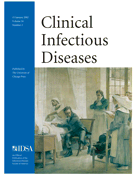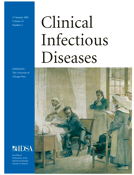
Cover image

detail from Laennec at the Necker Hospital Auscultating a Tuberculosis Patient in Front of His Students, Theobald Chartran. Sorbonne, Paris, France. Photograph © 2001 Re´union des Muse´es Nationaux/Art Resource, New York. Reproduced with permission.
The complete work is printed above.
This painting is the work of Theobald Chartran (1849–1907), a French artist who studied at theE´ cole des Beaux-Arts and became a well-known historical muralist and fashionable portrait painter. On annual trips to the United States, he made many paintings, including this one, which belongs to the National Library of Medicine; the Signing of the Peace Treaty between Spain and the United States; and portraits of Theodore and Edith Roosevelt. His portrait of Theodore Roosevelt was discarded in favor of a painting by his contemporary, John Singer Sargent, but the Edith Roosevelt portrait is in the White House. Here, Chartran depicts Rene T. H. Laennec (1781– 1826), author of De l’auscultation mediate (1819), in which Laennec described the design of an instrument to examine the chest and its uses in examination of patients with tuberculosis and other lung diseases. This novel instrument is the cylindrical object Laennec holds in his left hand while he listens to the patient’s chest directly, in the traditional manner. The artist has illustrated this first “stethoscope” accurately— it was a hollow wooden cylinder made to be held against the ear, with a cone shape at the other end that was placed against the chest; a second cylinder of brass was inserted into the wooden cylinder, to amplify the heart sounds or vocalization more effectively. Laennec was appointed physician at the Necker Hospital in Paris in 1816, where he taught medicine, as shown here with students and the nursing sister, in habit, observing his clinical examination. Laennec became chair of medicine at the College of France in 1822 but died of tuberculosis only 4 years later. (Ann Arvin, Art Editor)



